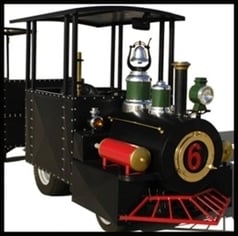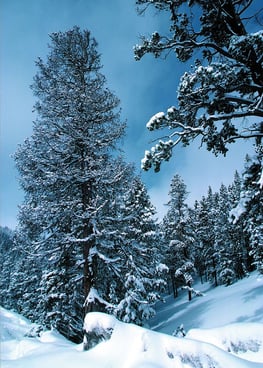Virginia Lee Burton won critical acclaim and the heartfelt approval of generations of readers, young and old. How did she accomplish this? She did it by first securing the endorsement of her own two children. Her young sons, Ari and Michael, like all children in Burton’s estimation, were “very frank critics.” By gauging their responses, she would adjust her stories and her illustrations to make sure that she not only captured but also maintained their attention.
She found initial success with children's books that featured big machines (and a little house) that had admirable human qualities. Burton wove themes of cooperation, perseverance, adaptability and good old fashioned hard work into her stories. These endearing characters and timeless life lessons were then wrapped in an air of nostalgia. Young readers learn that things can change, and older readers remember that they have. Although change can be a frightening thing, maybe more so for the latter group than the former, these stories end on a hopeful note in which positive changes are embraced and negative ones reversed. Take a moment to discover, or re-discover, these top five children’s classics by Virginia Lee Burton.
1. Choo Choo (1937)
 This, Burton’s first published children’s book, tells the story of a runaway engine. Choo Choo, the little engine, leaves a community of people who nurture her, fuel her, and direct her to enjoy a life free of responsibility. She races away shouting, “stop, look and listen to me.” Before long, however, “she had lost her way.” She is rescued and returned to the roundhouse where she is cared for and where she once again, quite literally, pulls her weight in the train station.
This, Burton’s first published children’s book, tells the story of a runaway engine. Choo Choo, the little engine, leaves a community of people who nurture her, fuel her, and direct her to enjoy a life free of responsibility. She races away shouting, “stop, look and listen to me.” Before long, however, “she had lost her way.” She is rescued and returned to the roundhouse where she is cared for and where she once again, quite literally, pulls her weight in the train station.
2. Mike Mulligan and His Steam Shovel (1939)
This classic story is about a man and his steam shovel, Mary Ann, who eventually dig themselves into a hole they can’t get out of. In their prime, they dig canals, cut through mountains, level highways, prepare landing fields, and create cellars. It is their hard work that paves the way for progress of all kinds—for travel by boat, train, automobile, and airplane and for the rise of skyscrapers in big cities. Eventually, however, progress is their undoing as new gas and electric shovels take over. So Mike and Mary Ann head to a small town where his audacious claim that Mary Ann can "dig as much in a day as a hundred men could dig in a week” gets him a job digging the cellar for their new town hall. He makes good on his claim, but finds, in his haste, that he has not left a way out of the cellar. It is the voice of a small boy, who has been full of good ideas since the beginning of the challenge, that calls for Mary Ann to stay in the cellar as the furnace and for Mike to be the maintenance man. They live out their retirement in comfort, finding joy and purpose in their new circumstances.
3. The Little House (1942)
This 1942 Caldecott winner is a charming story about a little house who sits on a hill and watches, unchanged, as the sun rises and sets, the moon travels through its phases, the seasons come and go, and the children grow and move to the city. The city eventually sprawls and envelopes her. Her curiosity about it is satisfied, but she is not happy, and she longs for her quiet, simple life in the county. She, like Choo Choo and Mary Ann, finds sanctuary. She moves to a new hilltop in the country where “once again she was lived in and taken care of.”
4. Katy and the Big Snow (1943)
 This Caldecott winner in 1943 revisits the themes of patience, hard work, and perseverance introduced in Burton’s earlier stories. A strong, shiny machine, again given a girl’s name, waits until crisis requires her services, and then she works tirelessly for the greater good. She is driven, and feels great satisfaction in a job well done.
This Caldecott winner in 1943 revisits the themes of patience, hard work, and perseverance introduced in Burton’s earlier stories. A strong, shiny machine, again given a girl’s name, waits until crisis requires her services, and then she works tirelessly for the greater good. She is driven, and feels great satisfaction in a job well done.
5. Life Story (1962)
Shakespeare famously penned, “All the world’s a stage...” and Virginia Lee Burton takes this metaphor a step further as she writes the evolution of the world as a play in five acts. She begins with the vastness of the solar system and ends with a family standing in a natural history museum. In the concluding scene she poses the following challenge: “And now it is your life story. The stage is set, the time is now, and the place where you are.”
In a world that seems to be changing at a breakneck pace, and in which you might feel carried along in its tide, channel the choo choo, the steam shovel, the little house, and the snow plow. Return to your purpose. It may help to make these classic stories part of your (and your children’s) “Life Story.”









